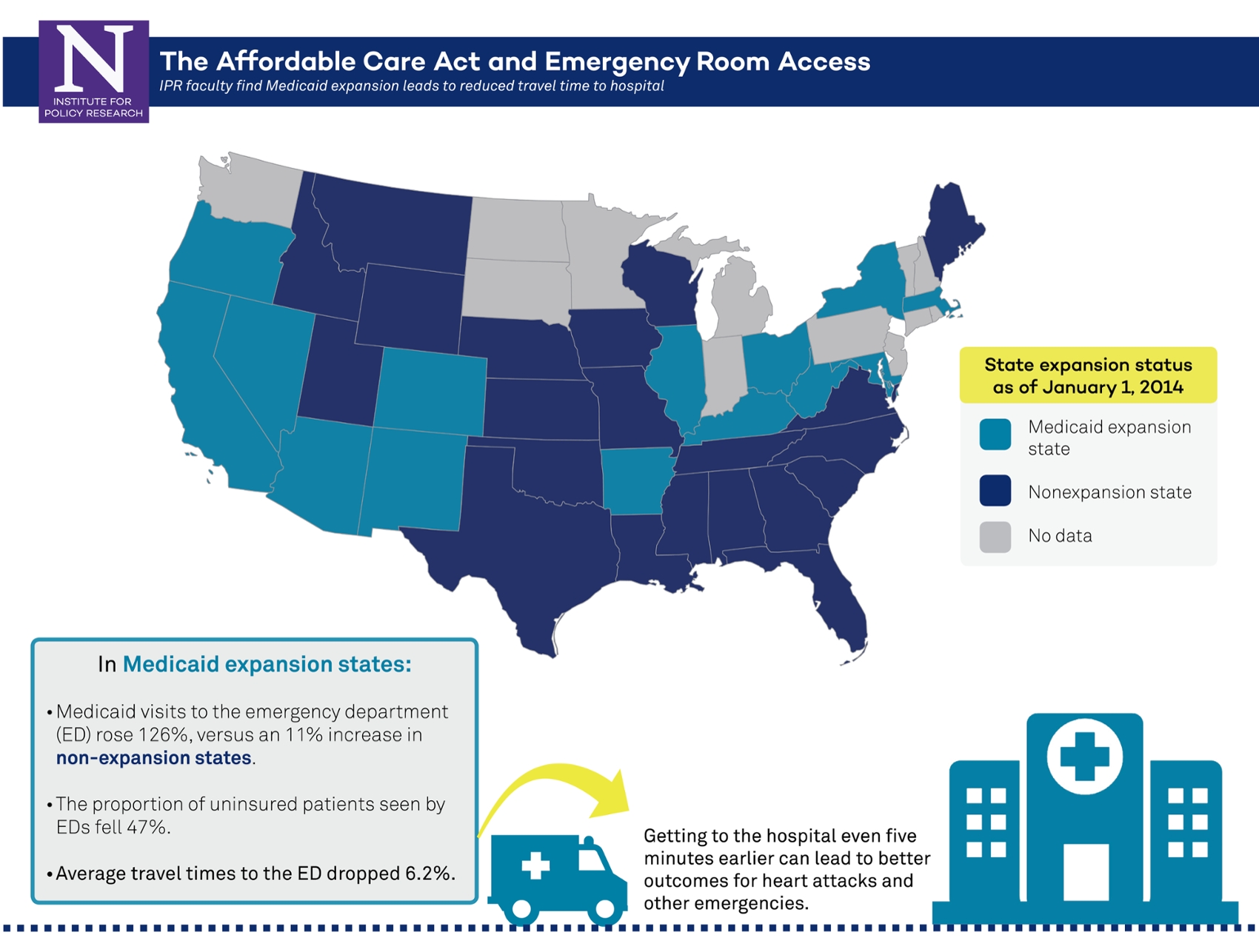Infographic: The Affordable Care Act and Emergency Room Access
IPR faculty find Medicaid expansion leads to reduced travel time to hospital
Get all our news
Click on the image above to see a larger version of the infographic.
Senate Republicans have begun the formal process of repealing the Affordable Care Act (ACA), but new evidence supports keeping the legislation: A study in the Annals of Internal Medicine suggests the ACA enabled low-income patients to access emergency care more quickly.
IPR economist Matthew Notowidigdo and IPR associate Craig Garthwaite, associate professor of strategy, find that Medicaid expansion led to more Medicaid patients in the emergency room, and those patients were able to get to the hospital in less time than before states expanded the program.
Together with Tal Gross of Columbia University and John Graves of Vanderbilt University, they examined data on more than 1 million emergency department visits for adults on Medicaid in 2013 and 2014 at 126 for-profit hospitals.
Prior to 2014, these hospitals had similar proportions of uninsured patients. But by the end of the year, the proportion of uninsured patients seen by emergency departments in Medicaid expansion states fell 47 percent.
Meanwhile, the number of Medicaid visits in expansion states rose 126 percent, versus an 11 percent increase in states that did not expand the program.
The researchers also find that in 2014, average travel times to the hospital for emergency department care dropped 6.2 percent in 17 states that expanded Medicaid coverage. The estimated changes in travel time are averages across all Medicaid visits, not just those by newly insured patients. Taking this into account, the data imply a reduction of 24 percent, or 3 minutes, among newly insured patients.
“Our hypothesis is that there’s probably a perception among the uninsured that certain hospitals are more likely to accept them and more likely to treat them,” Notowidigdo said. “If it is an emergency, hospitals do still have to treat you, even without insurance, but it might be that many uninsured don’t understand that.”
Reducing travel time might be one way that Medicaid can improve health, as getting to the hospital even 5 minutes earlier can lead to better outcomes for heart attacks and other emergencies. Medicaid might also be bringing people to higher-quality hospitals, according to Notowidigdo.
“The U.S. has enormous variation in hospital quality,” he said. “If Medicaid actually affects what hospital you go to, it opens up a whole new line of inquiry of whether Medicaid brings people to hospitals that are going to do a better job treating them.”
Matthew Notowidigdo is associate professor of economics and an IPR fellow. Craig Garthwaite is associate professor of strategy and an IPR associate.
Published: March 3, 2017.
